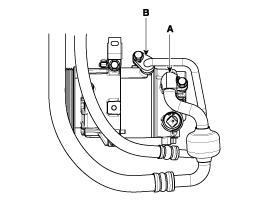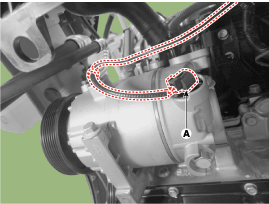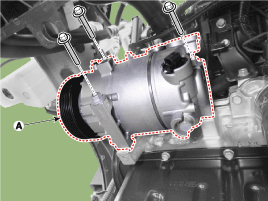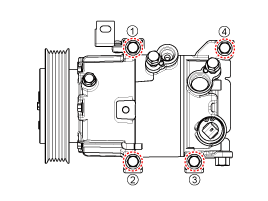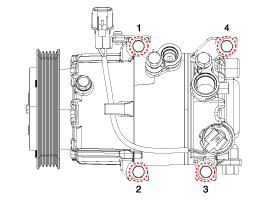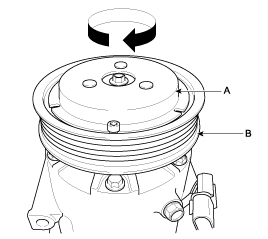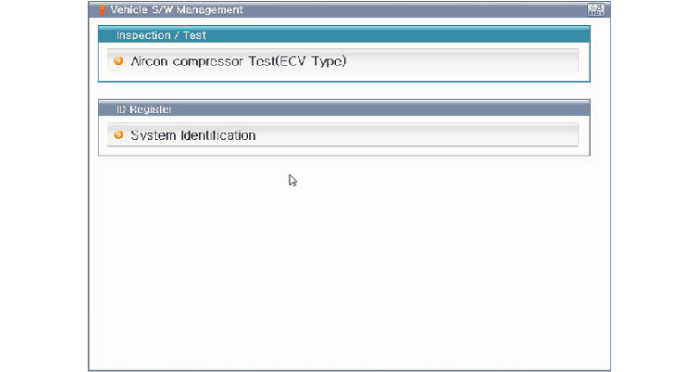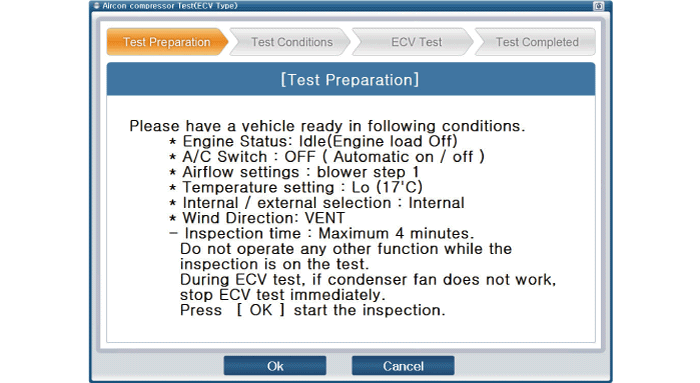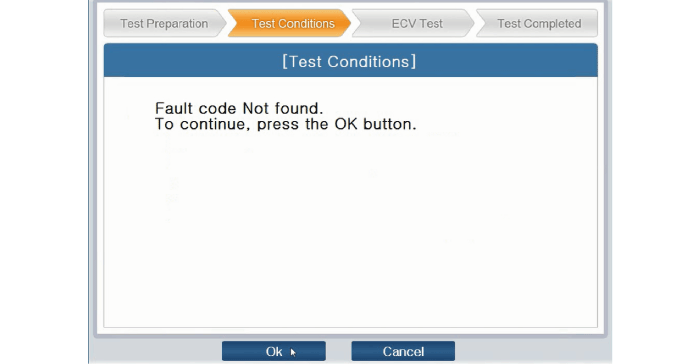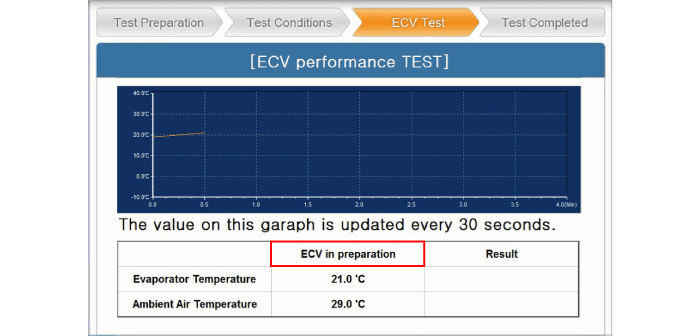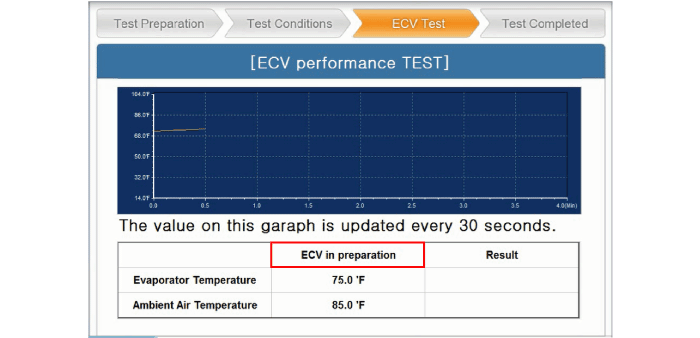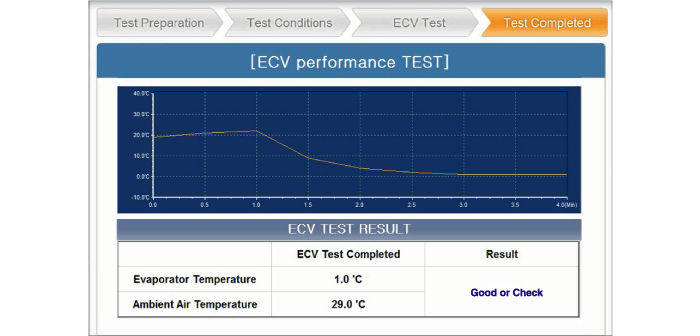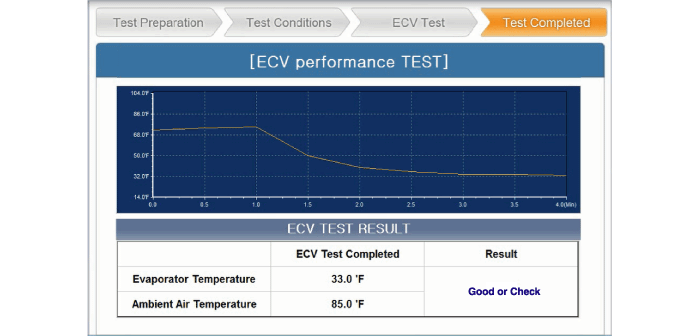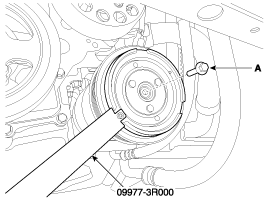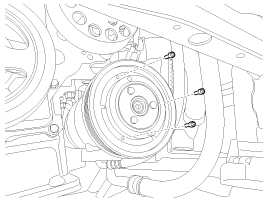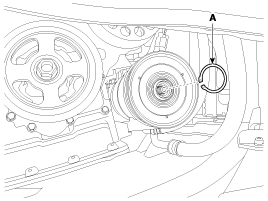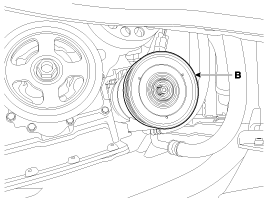Hyundai Creta: Air Conditioning System / Compressor
Description and operation
| Description |
The compressor is the power unit of the A/C system.
It is located on the side of engine block and driven by a V-belt of the engine.
The compressor changes low-pressure and low-temperature refrigerant gas into
high-pressure and high-temperature refrigerant gas.
Variable Swash Plate Compressor
The compressor has a swash plate that rotates to reciprocate pistons, which
compress refrigerant.
The variable swash plate compressor controls the swash plate angle to change
the refrigerant displacement. It achieves precise cooling capability control
in accordance with vehicle interior and driving conditions.
The externally controlled variable swash plate compressor changes the swash
plate angle by an ECV (Electric Control Valve) in accordance with an electrical
signal from the heater & A/C control unit.
This enables stable temperature control and improvees driving comfort.
ECV Control Diagram
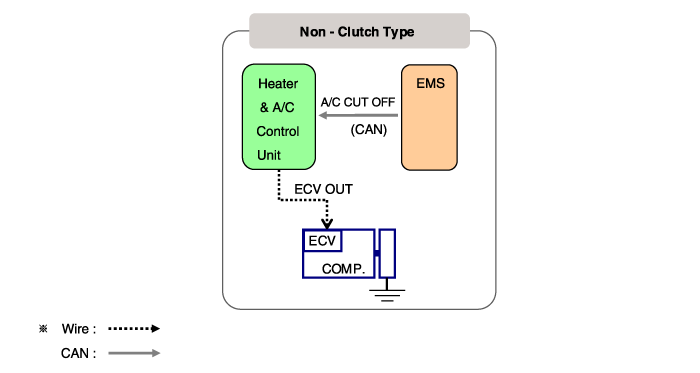
Components and components location
| Components |
| [Gamma Engine] |
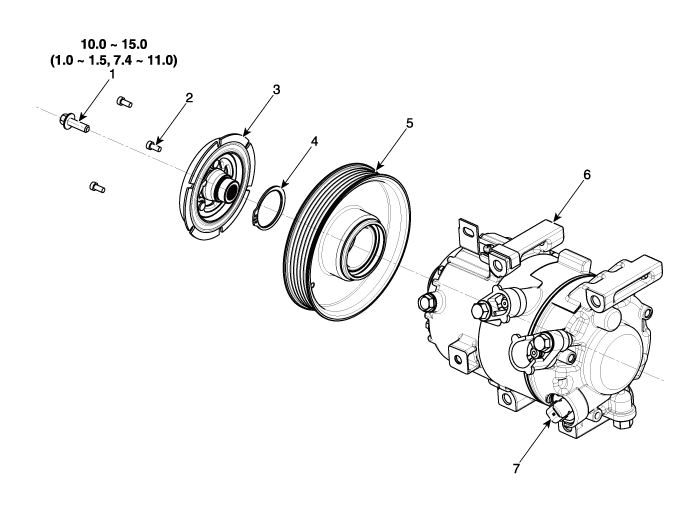
| 1. Clutch Bolt 2. Limiter Bolt 3. Limiter & Hub Assembly 4. Snap Ring |
5. Pulley 6. Compressor Assembly 7. Electric Control Valve (ECV) |
| [U2 Engine] |
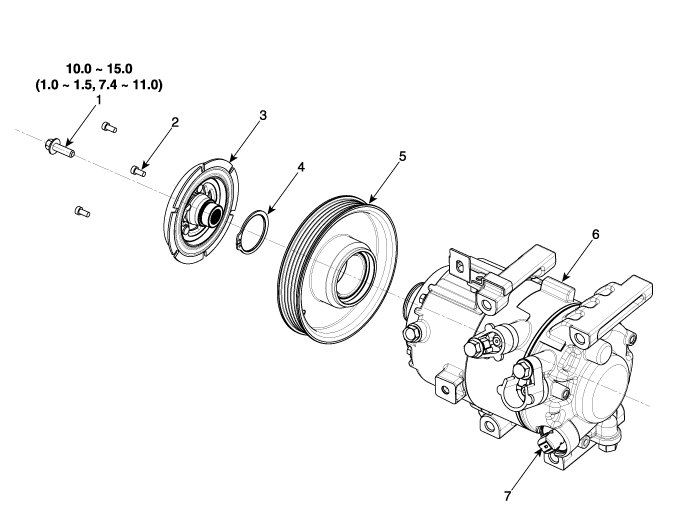
| 1. Clutch Bolt 2. Limiter Bolt 3. Limiter & Hub Assembly 4. Snap Ring |
5. Pulley 6. Compressor Assembly 7. Electric Control Valve (ECV) |
| Components Location |
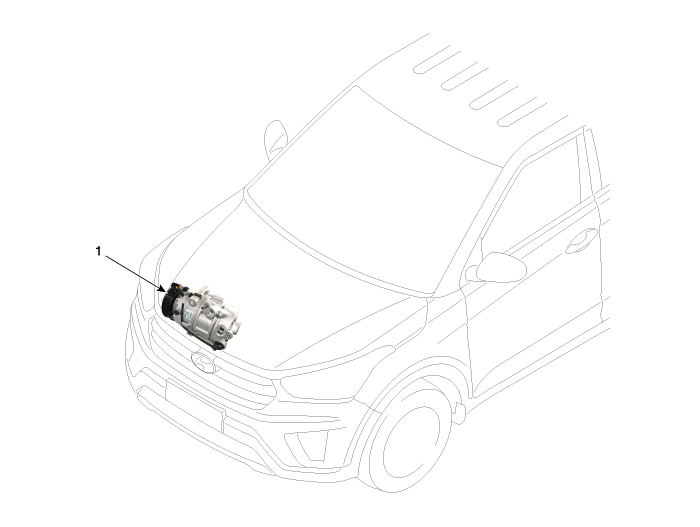
| 1. Comperssor |
Repair procedures
| Removal |
| 1. |
If the compressor is marginally operable, run the engine at idle speed,
and let the air conditioning work for a few minutes, then shut the engine
off.
|
| 2. |
Disconnect the negative (-) battery terminal.
|
| 3. |
Recover the refrigerant with a recovery/charging station.
|
| 4. |
Remove the engine room cover.
(Refer to Engine Mechanical System - " Engine Room Cover")
|
| 5. |
Loosen the drive belt.
(Refer to Engine Mechanical System - " Drive Belt")
|
| 6. |
Remove the bolts, then disconnect the suction line (A) and discharge
line (B) from the compressor.
|
| 7. |
Disconnect the compressor switch connector (A).
|
| 8. |
Remove the compressor (A) by loosening the mounting bolts.
|
| Installation |
| 1. |
Make sure the compressor (A) mounting bolt with the correct length is
screwed in. Tighten the mounting bolts in the specified tightening order.
[Gamma Engine]
[U2 Engine]
|
| 2. |
Install in the reverse order of removal.
|
| Inspection |
| 1. |
Check the plated parts of the limiter & hub assembly (A) for discoloration,
peeling or other damage. If there is damage, replace the assembly.
|
| 2. |
Check the pulley (B) bearing play and drag by rotating the pulley by
hand. Replace the pulley with a new one if it is noisy or has excessive
play/drag.
|
| External Control Valve Compressor Inspection (GDS) |
Compressor type: Fixed type compressor, External control valve, Internal control
valve.
In cases of fixed type and internal control valve, it is possible to inspect
compressor's operation with clutch noise.
When it comes to External control valve, however, it cannot be checked in this
way because it doesn't have a clutch.
So, ECV should be inspected with GDS as below.
| 1. |
Connect GDS to the vehicle and select 'Aircon Compressor Test(ECV type)'
[ECV1]
|
| 2. |
Make the vehicle ready according to the GDS instruction on the monitor.
(Turn off A/C 'switch' only)
[ECV2]
[ECV3]
|
| 3. |
Check if other DTC codes are found before inspecting ECV compressor.
If so, solve that problems first. If not, press 'OK' button to continue.
[ECV4]
|
| 4. |
Start inspection
[ECV5]
[ECV6]
|
| 5. |
Check the result of inspection and click 'Check Detail' if it's 'Check'.
Follow the instruction and inspect ECV again from the first step.
[ECV7]
[ECV8]
|
| Disassembly |
| 1. |
Loosen the drive belt.
(Refer to Engine Mechanical System - " Drive Belt")
|
| 2. |
Remove the clutch bolt (A) while holding the pulley with a clutch bolt
remover (09977-3R000).
|
| 3. |
Loossen the limiter bolts and then remove the limiter & hub assembly.
|
| 4. |
Remove the pulley (B) after removing the snap ring (A) with a snap ring
plier.
|
| 5. |
Reassemble in the reverse order of disassembly.
|
 Refrigerant Line
Refrigerant Line
Components and components location
Components Location
1. Refrigerant Line Assembly
Repair procedures
Replacement
1.
...
 Condenser
Condenser
Components and components location
Components Location
1. Condenser
Repair procedures
Inspection
1.
Check the condens ...
Other information:
Lincoln Nautilus 2018-2025 Owners Manual: Instrument Cluster Display Main Menu
Depending on your vehicle options, some
menu items can appear different or not at
all.
Note: For your safety, some features are
speed-dependent and could be unavailable
when your vehicle is above a certain speed.
...
Hyundai Creta GS 2014-2025 Service Manual: ESCL(Electronic Steering Column Lock)
Components and components location
Component
Repair procedures
Removal
1.
Disconnect the negative (-) battery terminal.
2.
Remove the crash pad lower panel.
(Refer to Body - "Crash Pad Lower Panel")
...
© 2017-2025 www.hcrmangs.com



